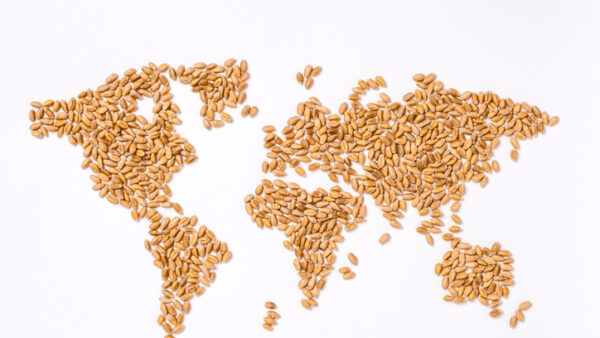By the time the European Commission will present its legislative proposals to amend the current EU regulatory framework for plant variety registration and seed marketing, almost 10 years will have passed since its last and unsuccessful attempt of a comprehensive overhaul of the system. So the logical first question to ask is “why”? Why is it that the executive sees the need to give it another try, despite the rather negative reception its ideas received from some stakeholders and, ultimately, the European Parliament back in 2013/14?
REASONS FOR A SECOND TRY
One good reason clearly is that some of the practical issues triggering the original review remained valid. One could call it “unfinished business”. This is true for the practical alignment of the seed marketing rules with the new EU Plant Health Regulation as well as with the Official Controls Regulation. All were part of the same “Better Regulation” package in 2013 and the rejection of the specific part on seed marketing has created a number of practical problems of inconsistency and lack of clarity for operators as well as administrations that now should finally be resolved. In addition, several issues developed further in the meantime which created new challenges or opportunities. This would be true, for example, regarding the use of advanced technology in variety testing, data management for automatic listing of newly accepted varieties on the EU’s Common Catalogue, or simply the positive practical experience gained with the extended involvement of the sector in quality assurance. Moreover, seed markets develop over time and there is a clear interest in the industry and from seed users to extend the assurance the system brings to new, additional species. It is probably fair to assume that these (and more) practical and rather technical reasons were important drivers behind the Member States’ insistence that the Commission must resume its legislative work in this area.
It is equally fair to state that all those valid, good reasons neither caused the failure of the original initiative nor triggered much enthusiasm on the side of the Commission to give it another go. In fact, in the run-up to the discussion by Agricultural Ministers to pass a Council Decision, which is practically a political order to the Commission to start a review process, the executive itself had considered such initiative unnecessary. Now, some one and a half years later and following a rather limited consultation of stakeholders on an even more limited set of issues, things suddenly look rather different. So, the next logical question then is, of course, “what changed?” to explain the re-kindled interest.
WHAT HAS CHANGED?
What has changed, and actually quite radically, is the overall political background before which the Commission now vows to act and to tailor its individual initiatives. The Green Deal, the Farm-to-Fork and Biodiversity Strategies, CO2 emission reduction, climate neutrality, resilience and strategic autonomy – together they seem to form a new narrative in political discussions around agriculture, food and land use against which all political initiatives are weighed and either pursued or discarded. Seed as the starting point of all agricultural and ultimately all food production then logically attracts and some new attention in such changed political context. So, could this then be the starting point of an engaging and fruitful discussion where at the end we will look with satisfaction at a new EU seed law that continues to foster the domestic development as well as the Europe’s international position in plant breeding, seed production and seed trade? Well, unfortunately, that seems anything but certain. Because next to “what has changed?” one also needs to consider “what has not?”.
[tweetshare tweet=”What changed quite radically, is the overall political background before which the Commission now vows to act and to tailor its individual initiatives.” username=”eyJtZDUiOnRydWV9″]
WHAT HAS NOT CHANGED?
Looking back over the past decades, specifically to the discussions that led to the rejection of the Commission’s Better Regulation proposal in 2013 and 2014, and, more recently, to debates on the future of Europe’s agricultural policies and related measures in the area of environmental protection, preservation of biodiversity or food quality and international trade, there are good reasons to be sceptical. All these discussions have continuously become more divisive, agitated and deconstructive as they were increasingly fought with an almost religious fury and righteousness that left little room for facts and figures, common sense and compromise. Food and farming, it seems, have become a political battleground dividing friends and foes rather than bringing together partners and competitors. Still, the fact that so many are interested and so many care about the subject also bears chances for this new attempt.
ABOUT THE WHAT AND THE HOW
A lot will depend on how the further consultation of stakeholders will be carried out. This is less a question of who will be consulted, at what point in time, what tools will be used and how all this will be duly documented and reported on in the final impact assessment the Commission will elaborate. This all will surely follow due process and standards. It is foremost a question of what the defined objectives of this specific legislation are and how achieving them may be helped by changes to the current rules. Clearly, if there is ambiguity in the answer(s) to the first part of that question, there will be incoherence in the answers to the second. And consequently, rather diverging opinions whether one’s own input has correctly been considered.
THE CORE OBJECTIVE
It is therefore appropriate to remind ourselves why the EU established seed marketing rules in the first place: the different acts stipulate that the production of the different plant products occupies a significant place in the Union’s agriculture, that satisfactory results of their cultivation depends to a large extent on the use of appropriate (i.e. high quality) seed, and that greater productivity will be achieved if the free choice of varieties is based on strict uniform rules that provide quality assurance. In short, the legislation shall establish a true common market and fair competition for suppliers and broad choice and product quality assurance to customers, supporting a competitive seed sector and farmers’ economic performance. This is the core objective of all the EU’s seed marketing Directives and the corresponding Directives for the Common Catalogues. In fact, a rather typical “technical” legislation, similar to hundreds of acts in other economic areas that safeguard our Common Market.
[tweetshare tweet=”The EU seed legislation shall establish a true common market, fair competition for suppliers, broad choice & product quality assurance to customers, supporting a competitive seed sector and farmers’ economic performance.” username=”eyJtZDUiOnRydWV9″]
EXEMPTIONS AND ADDITIONS
However, the overall regulatory framework for seed is indeed much broader than the basic six Marketing Directives for agricultural and vegetable species and the two related Common Catalogues. There are various acts that provide specific exemptions or additions in relation to specific seed users (e.g., amateur gardeners), markets and suppliers (small packages distributed through garden centres or supermarkets) or purposes (conservation of genetic resources rather than commercial crop production). While principal product quality assurance and fair competition remain valid policy objectives also for these niches, additional ones such as preservation of genetic resources or facilitated rules for non-commercial (private) activities come into play and justify specific rules.
IN THE MIX
Unfortunately, already back in 2013/14 all this got mixed up, first in the Commission’s proposal and then in the ensuing political debate. The proposed tool of an all-encompassing Regulation suggested full harmonisation (and uniformity) of rules for all species and markets while the integrated elements for specific operators, niche productions and seed material pointed in the opposite direction. The consequent misperception of the proposal has not least been the result of a lack of clarity of what the rationale of the new legislation was supposed to be: safeguarding fair competition, a common market and high quality, resource efficient agricultural production or preservation of plant genetic resources in- and ex-situ and facilitated rules for private, non-commercial gardeners and conservation networks.
WHAT TO AVOID?
Surely, such ambiguity should be avoided with the new initiative. This should start with the realisation that one specific legislation must not be overburdened with too wide a range of different policy objectives. Seed Marketing legislation is in the first place indeed a marketing legislation. It regulates a defined market and how and what products may be supplied and sold. While there is ample room for tailor made exemptions or specifications, there is logically also a need for some uniform principles and thus exclusions of low-quality or untested products.
What should be avoided as well is the attempt to (ab)use the seed marketing proposal to re-discuss (and regulate) the general direction of the EU’s agricultural production, what farm model we prefer and what “good” food is made of. This is not a decision to make for seed regulators, nor for seed suppliers. It is one for farmers and consumers. What Europe’s seed legislation must continue to assure is that farmers can confidently access an ever-growing range of high-quality seed of well-performing plant varieties that meet the demand of customers and consumers, in all market segments, be they mainstream or niches. In addition, practical and specific provisions should continue to allow and facilitate the pursuit of further policy objectives related to seed, such as conservation and recreation. But they should neither contradict nor jeopardise the core objectives of the Common Market legislation for commercial seed.
[tweetshare tweet=”What farm model we prefer and what ‘good’ food is made of is not a decision to make for seed regulators nor for seed suppliers. It is one for farmers and consumers.” username=”eyJtZDUiOnRydWV9″]
FINGERS CROSSED
If the Commission’s further consultation process and later legislative proposal includes such clear objectives and differentiation, maybe we will see a different discussion developing in the months to come. And if that could lead to a less divisive, less agitated and more constructive dialogue, well then maybe we do in the end arrive at a proposal and, ultimately, new EU seed law that will prove at least as successful as the current one. Let’s keep our fingers crossed!
Related Articles:
https://european-seed.com/2020/09/euroseeds-raises-the-bar-garlich-von-essen-on-the-euroseeds2020-virtual-congress/
https://european-seed.com/2019/09/the-man-behind-the-myth-an-in-depth-interview-with-garlich-von-essen/













